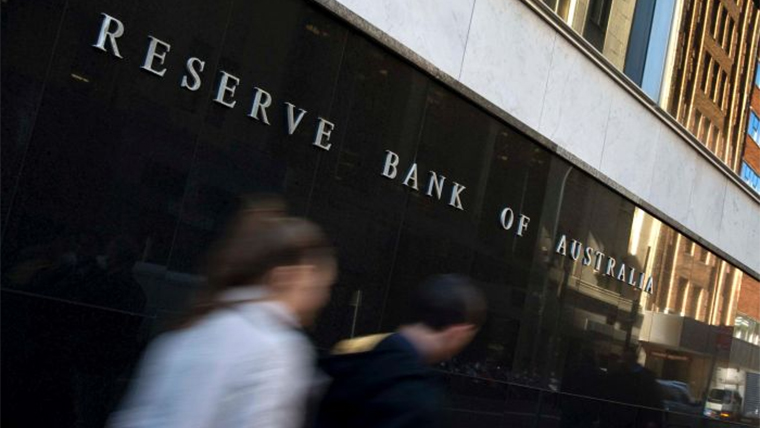Two big things are happening in the bond market. One, the government is actually borrowing at a profit. Two, there appears to be a quiet plan by the RBA to let bond rates rise and take the heat out of housing. As the banks “printed money” warchest hits $250bn, the central bank has stopped stomping on the key 3-year bond rate. Michael West reports.
Two big things are happening in the bond market. One, the government can now borrow at a profit. Short-term rates have slipped below zero, so the government can borrow billions and actually pay back less than it borrows.
Two, three year bonds – the bonds which the banks use to price the housing market – have risen. They’ve risen because the Reserve Bank has been conducting a little experiment, a quiet experiment which has yet to be picked up by the press.
Why quiet? RBA governors Philip Lowe and Buy Debelle are hardly going to win points from Treasurer Josh Frydenberg for letting housing rates rise in an election year and, for their part, the banks will hardly be singing it from the rooftops either, revelling as they are in a credit boom and making dazzling profits to boot.
The RBA experiment probably started around two weeks ago with a message to the commercial banks: that is, the RBA was going to stand away from the bond market and let it rip. Instead of stomping on 3-year rates, which it has been doing for yonks – buying and pushing interest rates down, the RBA just stepped out of the market and left it to the banks.
This has meant the yield on the bonds which determine mortgage rates, 3 year bonds, has gone up.
Last wk’s interest rate moves = a new curve
What happens when #RBA stands back to see what happens if it does not enforce its 3 year 0.1% target rate
Context:
~ RBA stops its ultra-cheap (0.1%) 3 year funding of commercial banks 30 June
~ RBA meets + speaks 6 July#monpol #TFF pic.twitter.com/Lb4xyPyaQc— 13foot7 (@13foot7) June 12, 2021
On Monday June 7, the 3 year rate shot up taking the 4 year rate with it. These rates determine Australian mortgage rates so was this a move by the RBA to let household mortgage rates rise and finally take the heat out of the housing market? Were the banks going make a bit more profit on their mortgages?
The RBA did nothing about the rise this time – it hasn’t needed to use its unlimited power to halt a rise since it blitzed the market over two days in February and another in March. This time it stood back and watched.
As the 3 and 4 year rates went up one day, the 1 and 2 year rates went the other way – heading into negative territory. By Thursday morning the Federal Government was borrowing money at a profit, paying back less than it borrowed. And there were great profits to be made for anyone lucky enough to hold those bonds. As rates fall, bonds values rise.
Just to show that the RBA did not intend to do anything about the 1, 2, 3 and 4 year gyrations, it kept well away, buying state government bonds as usual on Wednesday and 7-11 year bonds on Thursday. Message received by the banks.
The commercial banks know what’s going on. It’s all about the RBA’s pending July announcement on what it intends to do. Further, the ultra cheap RBA loans to the banks cease on 30 June; that’s the TFF or Term Funding Facility which kicked off when the pandemic hit last year, a measure to get the banks lending to small businesses to revive the economy.
Experimenting now with how they wish to change the bond markets and their approach to QE (creating new money).
This has not slowed down. Last time we reported in May on QE, the banks had $180bn sitting on deposit with the Reserve (sitting there in ESAs earning zero interest). The banks prefer to earn nothing than to risk it lending to small businesses.
There is now $252bn sitting on deposit with the RBA, a mighty war-chest.
The big questions for next month are: will the RBA stamp on the 3-year rate again, what will they do about ESAs which earn no interest? And what will happen to the cash overnight rate which is at 0.1%.
It is conjecture but also a fair call that the Reserve Bank wants to take the heat out of the housing markets, where credit is going beserk.
While the effect on the yield curve has been radical, the RBA is sticking to its QE for now. The government issues $4bn of bonds a week and the RBA buys $5bn of bonds from the banks, ergo newly minted money credited to the commercial banks’ accounts.
Psst, about that lazy $178 billion the banks have parked at the Reserve Bank …
Michael West established Michael West Media in 2016 to focus on journalism of high public interest, particularly the rising power of corporations over democracy. West was formerly a journalist and editor with Fairfax newspapers, a columnist for News Corp and even, once, a stockbroker.

